Picking a starting Blues team for round one of Super Rugby Pacific

The dawn of a new week means there is now little more than a fortnight until the inaugural edition of Super Rugby Pacific kicks-off.
Uncertainty still looms large over how the competition will play out with Omicron wreaking havoc on either side of the Tasman, but there is no shortage of anticipation and excitement as Super Rugby ushers in a new, Pacific-centric era.
As such, we have taken it upon ourselves to select what we believe will be the starting lineups for each of the 12 teams come round one of Super Rugby Pacific on February 18 and 19.
While pre-season form and fitness may still yet play a part in who is picked come the beginning of the campaign, these selections are largely based on the availability and squad status of players at the time of writing.
First up is the Blues, who, under the current schedule, will open their campaign against new cross-town rivals Moana Pasifika at Mt Smart Stadium on February 18.
1. Alex Hodgman
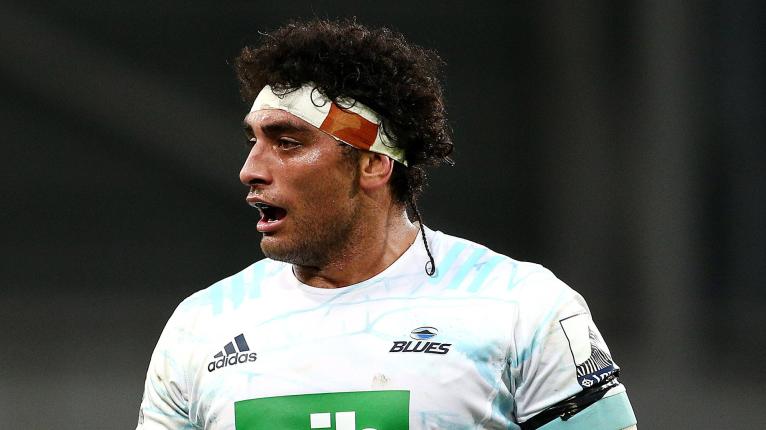
Alex Hodgman will be undoubtedly eager to resurrect his test career after missing international selection last year. Picked in Ian Foster’s maiden All Blacks squad on the back of his high work rate, reflected by his status as the only front rower to register in the top 10 for most tackles in Super Rugby Aotearoa 2020, Hodgman faded badly in 2021. His most notable moment of last year’s campaign was a red card against the Highlanders, which was followed by an NPC season where he played only two games before Auckland was forced to withdraw from the competition. That lack of game time has left Hodgman, and others in the Blues squad, desperate for game time, which should come in round one following a prolonged off-season conditioning programme, as well as Karl Tu’inukuafe’s extended All Blacks leave.
2. Kurt Eklund
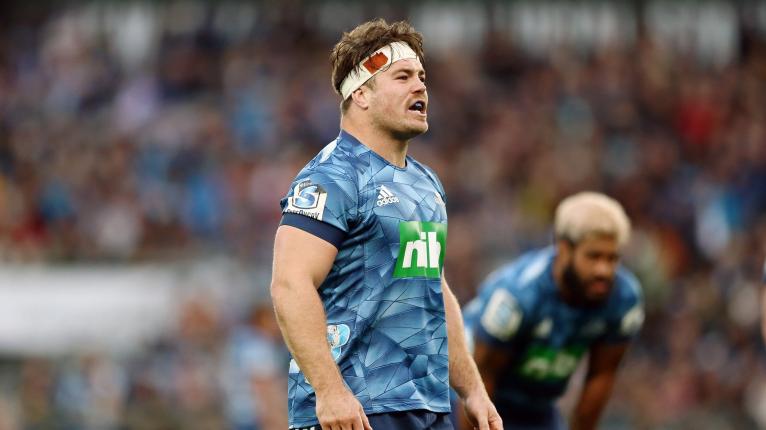
Having assumed the role of first-choice Blues hooker since the retirement of ex-captain James Parsons, Kurt Eklund looks primed to resume his place in the No 2 jersey. Selected in two Maori All Blacks squads since his breakout Super Rugby season in 2020, Eklund was also picked in the North Island squad for that year’s North vs South clash. That should give an indication to how highly-rated he is by the national selectors, although Eklund will need to maintain a high standard of performance throughout the year now that he has Ricky Riccitelli and Soane Vikena nipping at his heels.
3. Ofa Tuungafasi

Plagued by injury throughout much of last year, Ofa Tuungafasi struggled to rekindle the form that made him New Zealand’s premier prop during Super Rugby Aotearoa 2020. Aside from the red card he picked up against the Wallabies during the fourth Bledisloe Cup test, Tuungafasi was the best prop in the country that year. He provided the Blues and All Blacks with immense power and physicality at the set piece and in general play, but only featured in five tests off the bench after missing last year’s Super Rugby Trans-Tasman final as a knee injury took its toll. Now back in action at Blues HQ ahead of the new campaign, Tuungafasi’s quest to make up for lost time may place him as the frontrunner to start ahead of All Blacks teammate Nepo Laulala, who took on a large workload last year.
4. Luke Romano
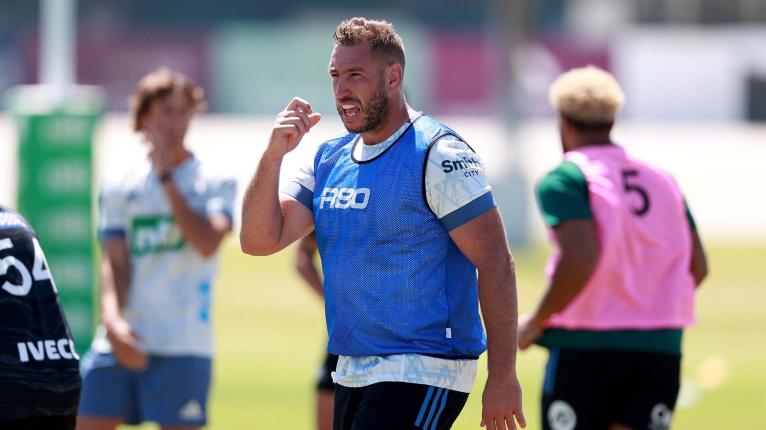
As one of the longest-serving Crusaders players in recent times, former All Blacks lock Luke Romano has done the unthinkable by moving to Auckland and signing with his former’s side’s arch-rivals for the season ahead. It’s an astute pick-up by the Blues, who have gained a World Cup-winning lock in the absence of last year’s captain Patrick Tuipulotu, who is in Japan on a season-long sabbatical. Deemed surplus to requirements by the Crusaders, Romano’s output at provincial level illustrates that he still has the ticker required to succeed in Super Rugby, something he has plenty of experience in with five titles to his name. His hefty physical stature of 1.99m and 120kg will also provide the tight five with plenty of bulk, making him a strong contender for a starting role.
5. Tom Robinson
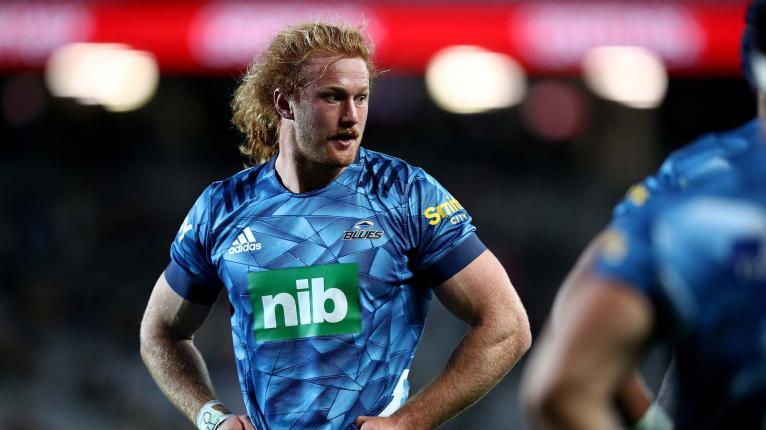
Although he has primarily been a blindside flanker throughout his professional career, it might be in the second row where Tom Robinson will need to accustom himself to this year. A talismanic presence for the Blues since his debut three years ago, Robinson is among a star-studded loose forward cohort that features three All Blacks and highly-touted youngster Anton Segner. As such, it could be at lock where Robinson’s best chances of selection lie. Perhaps he could alternate the No 6 jersey with Akira Ioane, as he did last year, but his status as a fringe All Blacks prospect should demand regular starting honours. Already familiar with lock, having played there for the Blues and Northland, Robinson – who stands at 1.98m – is the fourth-tallest player at the franchise. That bodes well for his selection chances in the second row, where he could thrive if given the chance.
6. Akira Ioane
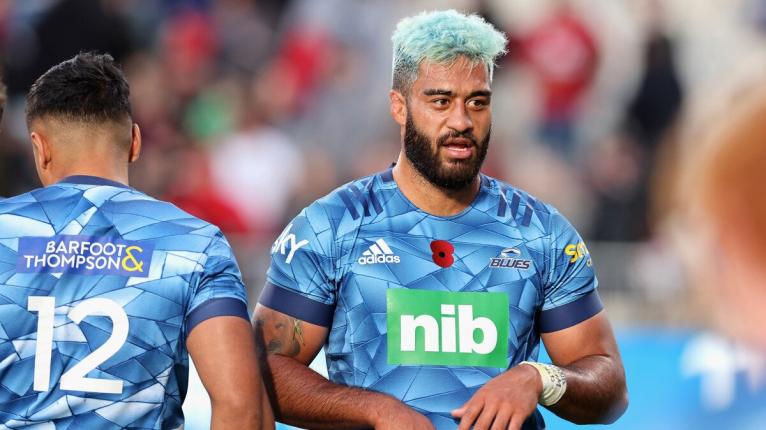
Unlike Tu’inukuafe and Laulala, both of whom missed selection in this side on the basis of their extended All Blacks breaks and test rugby workloads last year, Akira Ioane remains the favourite to start at No 6 against Moana Pasifika. That’s because Blues boss Leon MacDonald can afford to rest Tu’inukuafe and Laulala because his back-up options are two other All Blacks, Hodgman and Tuungafasi, both of whom are in need of game time. As already mentioned, such depth is also evident in the franchise’s loose forward stocks, but Ioane’s main competitor for the blindside flanker role is Robinson. If the latter is instead picked to fill in at lock, Ioane will have a clean run to start in what should be a full-strength Blues outfit, provided he doesn’t encounter any fitness, injury or fatigue issues that would otherwise prevent him from taking to the field.
7. Dalton Papalii
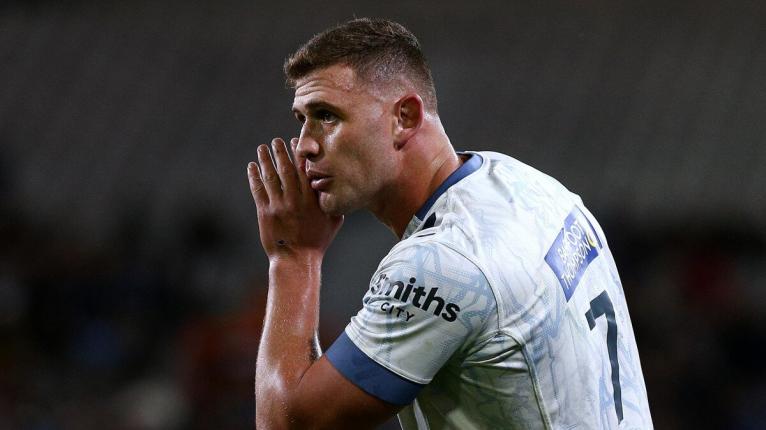
Among the standouts of 2021, Dalton Papalii will be a vital member of the Blues as they push for back-to-back titles for the first time since 1997. Now a serious challenger to both Ardie Savea and Sam Cane as an international starter at openside flanker, Papalii is the first-choice option in the No 7 jersey for the Blues. However, the addition of Segner to the franchise’s roster means Papalii has a genuine contender to deal with for starting honours, which MacDonald hopes will bring the best out of both players when they are given game time.
8. Hoskins Sotutu

While he has been afforded extended pre-season leave like the rest of his All Blacks teammates, Hoskins Sotutu is the only Blues international available for pre-season action when his side face the Chiefs in Te Puke next weekend. That’s a reflection of the minimal game time he received while on tour with the All Blacks last year, meaning he – like Hodgman and Tuungafasi – will be free and hungry for selection from the outset this season.
9. Finlay Christie

Another All Black who only managed fleeting appearances in international rugby last year, Finlay Christie will be chomping at the bit to build on last year’s campaign after he became a test-capped player for the first time. An energetic halfback whose strengths are his running game and work rate, Christie played in only five tests all year, which presents few hurdles for him to overcome in terms of rest and recovery leading into round one.
10. Harry Plummer
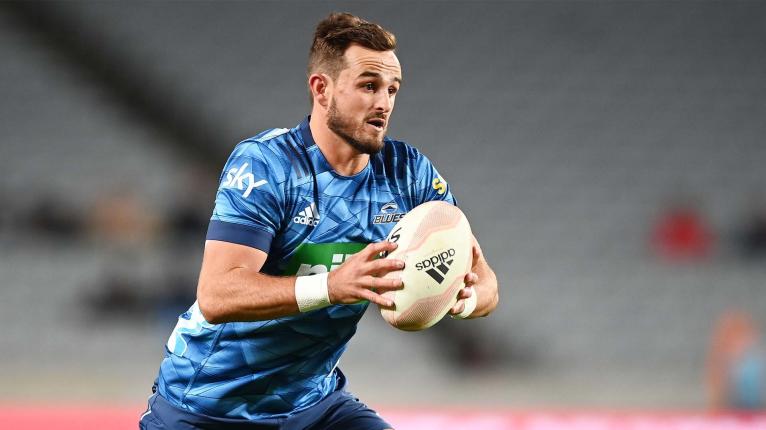
In an ideal world for the Blues, it would be Beauden Barrett lining up at first-five for his first match for the franchise since 2020. However, while that still might happen, it remains unclear just how ready he is to return to action after his campaign last year ended with a concussion against Ireland in Dublin. If Barrett hasn’t recovered fully in time for the Moana Pasifika clash, it might as well come down to a toss of the coin between Harry Plummer and Stephen Perofeta as to who will start in the two-time World Rugby Player of the Year’s absence. In Plummer, the Blues have a pivot who appeared to come of age when he landed the crucial kicks at goal to secure the franchise with its first piece of silverware in 18 years during last year’s Trans-Tasman final. He was also starved of game time by Auckland’s withdrawal from the NPC and will be incredibly eager to play for the first time since August. Perofeta, on the other hand, proved his quality as playmaker when he earned nomination for the Duane Monkley Medal after starring in Taranaki’s run to the NPC Championship. It would be hard for MacDonald to go wrong with either selection, and the pre-season matches will likely be used to separate the pair, but, for the time being, Plummer gets the nod.
11. Caleb Clarke
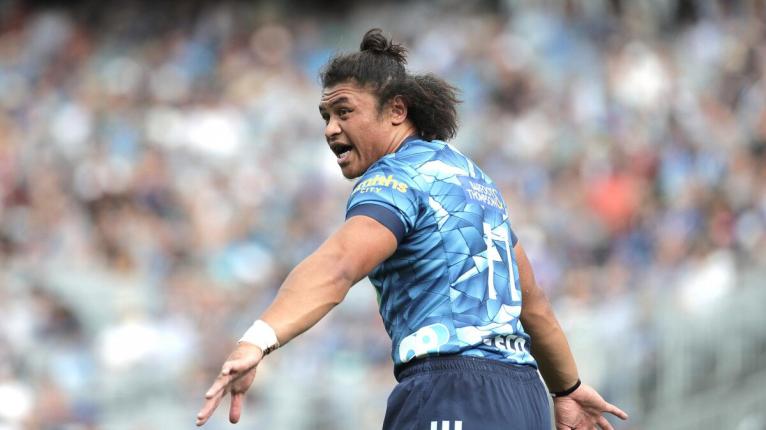
Speaking of players who haven’t played in some time, few people have been out of action for as long as Caleb Clarke. Opting out of Super Rugby Trans-Tasman to chase a place at the Olympics, Clarke was confined to a hotel room as a travelling reserve as the All Blacks Sevens went on to claim silver in Tokyo last July. Then, upon his arrival back in New Zealand, Clarke didn’t get the chance to play at all in the NPC because of Auckland’s withdrawal, leaving his hopes of an All Blacks recall following debut test campaign the year beforehand in tatters. It’s no surprise, then, that the five-test wing has reported for pre-season training in top shape and sounds as keen as possible to rip into the season ahead, a prospect that seems more than likely against Moana Pasifika.
12. Roger Tuivasa-Sheck
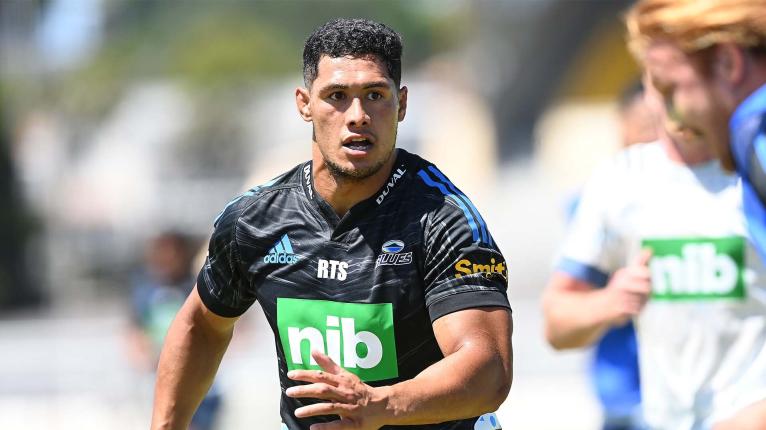
Part of why Clarke is in such good condition is because of the off-season training he endured with Roger Tuivasa-Sheck, the most-talked about player heading into Super Rugby Pacific. The former Warriors captain is set to embark on his maiden campaign as a rugby union player since switching from rugby league last year after missing out on NPC action because of Auckland’s Covid-enforced withdrawal. As one of the NRL’s biggest names, all eyes will be fixated on Tuivasa-Sheck, who has done plenty to impress MacDonald with his pre-season efforts at second-five, the position that he will begin his union career in.
13. Rieko Ioane
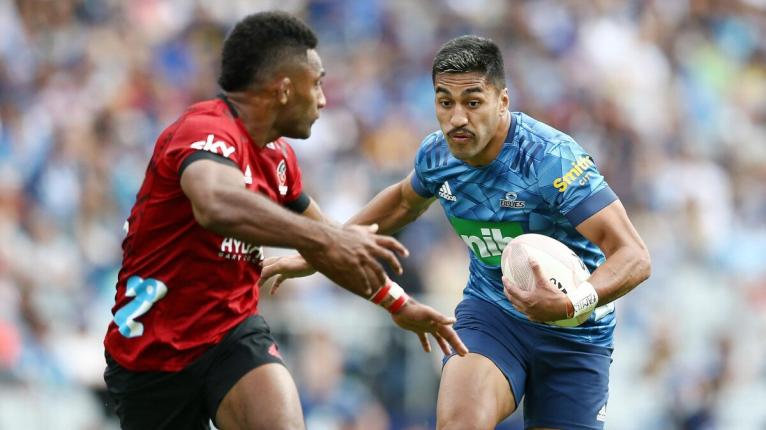
Like a few others named in this team, Rieko Ioane undertook an arduous test campaign in 2021, featuring in all but two matches for the All Blacks. It would be understandable, then, if MacDonald excluded him from the season-opener against Moana Pasifika, but there is no indication that Ioane is eager for extra time off. In fact, images from Blues HQ have circulated in recent weeks of Ioane partnering with Tuivasa-Sheck in an all-star midfield combination. That in itself is a tantalising enough thought to thrust Ioane into the thick of the action from the get-go, let alone the qualities that he himself can offer the side as an individual.
14. AJ Lam
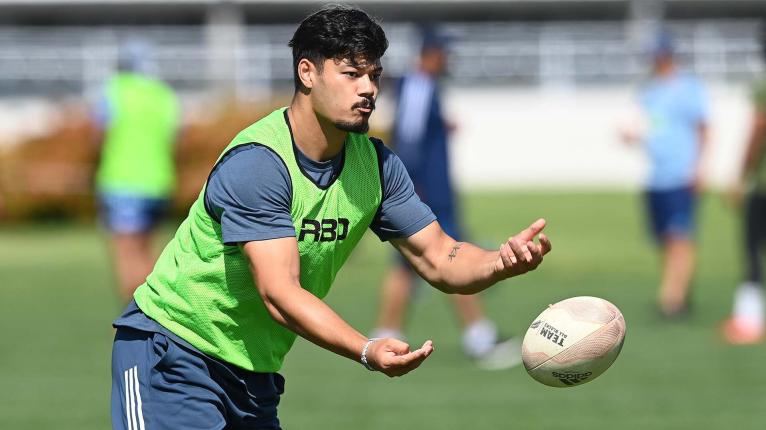
Outside of the headline names mentioned above, the Blues are blessed with an array of talent throughout their backline that is sure to make MacDonald’s task of selection difficult over the months to come. There are numerous contenders who all offer various attributes and have the kind of talent that make them worthy starters, effectively turning the job of picking a right wing into a lottery. However, on the basis of MacDonald’s comments a fortnight ago where he singled this player out as someone who has put his hand up for starting honours, AJ Lam takes the cake ahead of various other candidates like Mark Telea and Bryce Heem. The younger brother of ex-Hurricanes flyer Ben, AJ is equipped with the size and speed that made his older sibling such a success in the capital. After having caught glimpses of him in action in Super Rugby and the NPC, there are plenty of reasons to believe that Lam can follow in his brother’s footsteps with the Blues.
15. Zarn Sullivan

At the age of just 20-years-old, Zarn Sullivan emerged as one of the brightest prospects in New Zealand when he starred for the Blues en route to their Super Rugby Trans-Tasman title success last year. A strongly-built fullback, Sullivan’s kicking game both out of hand and off the tee proved to be a revelation for the Blues as he started in the side’s final seven matches of the year after having missed almost the entirety of Super Rugby Aotearoa. MacDonald’s reliance on Sullivan, who is now 21, is indicative of the faith he has of the youngster in the fullback jersey. Another to have missed out on last year’s NPC with Auckland, Sullivan will be ready to take his game to the next level come kick-off of the new season.










































Comments on RugbyPass
What a dagg in more ways than one
5 Go to commentsRegroup come back next year but sack some of the coaching team and don't be like the ABs last minute sacking. If Crusaders don't do well ABs don't do well.
5 Go to commentsProctor Definitely inform again this year had a hell of a season last year and this year is looking even better. Still mixed feelings about Ioane tho.
4 Go to commentsDagg is still trying to get enough headlines to make himself relevant enough to get a job. The Crusaders went back to square one at all levels. Shelve this season and nail the next one.
5 Go to commentsHe was in such great form. Sad for him but only a short term injury and it will be great to see him back for the finals.
1 Go to commentsAfter their 5/0 start, I had the Crusaders to finish Top 4 only…they lost the plot in Perth but will reload and back themselves vs 4th placed Rebels…
5 Go to commentsBoth nations missed a great opportunity to book a game that would have had a lot of interest from around the world. I understand these games can’t be organised in 5 minutes but they should have found a way to make it happen. I don’t think Wales are ducking anyone but it’s a bad look haha.
3 Go to commentsIt will be fascinating to see the effect that Jo Yapp has. If they can compete with Canada and give BFs a run for their money that will be progress
1 Go to commentsFollowing his dream and putting in the work. Go well young fella!
3 Go to commentsPerhaps filling Twickenham is one of Mitchell’s KPIs. I doubt whether both September matches will be at Twickenham on consecutive weekends. I would take the BF one to a large provincial stadium so as not to give them the advantage and experience of playing at Twickenham before a large crowd prior to the RWC.
3 Go to commentsvery unfortunate for Kitshoff, but big opportunity potentially for Nché to prove he is genuinely the best loosehead in the world, rather than just a specialist finisher. Presuming that if Kitshoff is out, it will also give Steenekamp a chance to come into the 23? Or are others likely to be ahead of him?
1 Go to commentsA long held question in popular culture asks if art imitates life or does the latter influence the former? Over this 6 nations I can ask the same question of the media influencing the thoughts of its audience or vice versa. Nobody wants to see cricket scores in rugby, as a spectacle it is not sustainable. With so many articles about England’s procession and lack of competition it feeds the epicaricacy of many looking for an opportunity to pounce. England are not the first team to dominate nor does it happen only in rugby, think Federer, Nadal, Red Bull or Mercedes, Manchester Utd, Australia in tests and World Cups. Instead of celebrating the achievements why find reasons to falsify it pointing towards larger playing pool, professional for a longer period or mitigate with the lack of growth in other nations. Can we not enjoy it while it is here and know that it won’t last for ever, others coveting what England have will soon take the crown, ask the aforementioned?
6 Go to commentsShame he won’t turn out for the Netherlands now they’re improving. U20s are Euro champs and in the U20 Trophy this year. The senior sides gets better every year too.
3 Go to commentsWill rugbypass tv be showing these games?
1 Go to commentsWell where do you start, the fact that England have a professional domestic league and Ireland’s is fully amatuer, that they have fully seperated professional squads at Fifteens and Sevens (7’s thinly disguised as GB), and Ireland have fully pro Sevens squad who loan some players back to the Semi-Professional Fifteens squad (moved from amateur for only a year or so) for a few games at 6N & RWC’s. The Women’s games is a shambles, and is at risk of killing itself by pushing for professionalism when the market isn’t really there to support it outside one or two countnries..
6 Go to commentsWayne Smith's input didn't have as much impact on the last final as Davison's red card for Thompson. England were 14 points up and flying when that happened.
6 Go to commentsBilly's been playing consistently well for 2 - 3 seasons now and deserves a look in at the top level. Ioane and ALB are still first choice but there needs to be injury cover and succession. His partnership with Jordie gives him first dibs you'd think. Go the Hurricanes.
4 Go to commentsIt’s not up to Wales to support Georgian Rugby. That’s up to International Rugby and Georgia. I sympathise with Georgia’s decent attempt to create this fixture. But for Wales the proposed match up is just a potential stick to beat them with and a potential big psychological blow that young Welsh team doesn’t need. (I’m Irish BTW.)
3 Go to commentsCale certainly looks great in space, but as you say, he has struggled in contact. At 23 years old, turning 24 this year, he should be close to full physical maturity and yet there exists a considerable gap in the power and physicality required for international rugby. Weight doesn’t automatically equate to power and physicality either. Can he go from a player who’s being physically dominated in Super rugby to physically dominating in international rugby in 1 or 2 years? That’s a big ask but he may end up being a late bloomer.
38 Go to commentsIf rugby wants to remain interesting in the AI era then it will need to work on changing the rules. AI will reduce the tactical advantage of smart game plans, will neutralize primary attacking weapons, and will move rugby from a being a game of inches to a game of millimetres. It will be about sheer athleticism and technique,about avoiding mistakes, and about referees. Many fans will find that boring. The answer is to add creative degrees of freedom to the game. The 50-22 is an example. But we can have fun inventing others, like the right to add more players for X minutes per game, or the equivalent of the 2-point conversion in American football, the ability to call a 12-player scrum, etc. Not saying these are great ideas, but making the point that the more of these alternatives you allow, the less AI will be able to lock down high-probability strategies. This is not because AI does not have the compute power, but because it has more choices and has less data, or less-specific data. That will take time and debate, but big, positive and immediate impact could be in the area of ref/TMO assistance. The technology is easily good enough today to detect forward passes, not-straight lineouts, offside at breakdown/scrum/lineout, obstruction, early/late tackles, and a lot of other things. WR should be ultra aggressive in doing this, as it will really help in an area in which the game is really struggling. In the long run there needs to be substantial creativity applied to the rules. Without that AI (along with all of the pro innovations) will turn rugby into a bash fest.
24 Go to comments